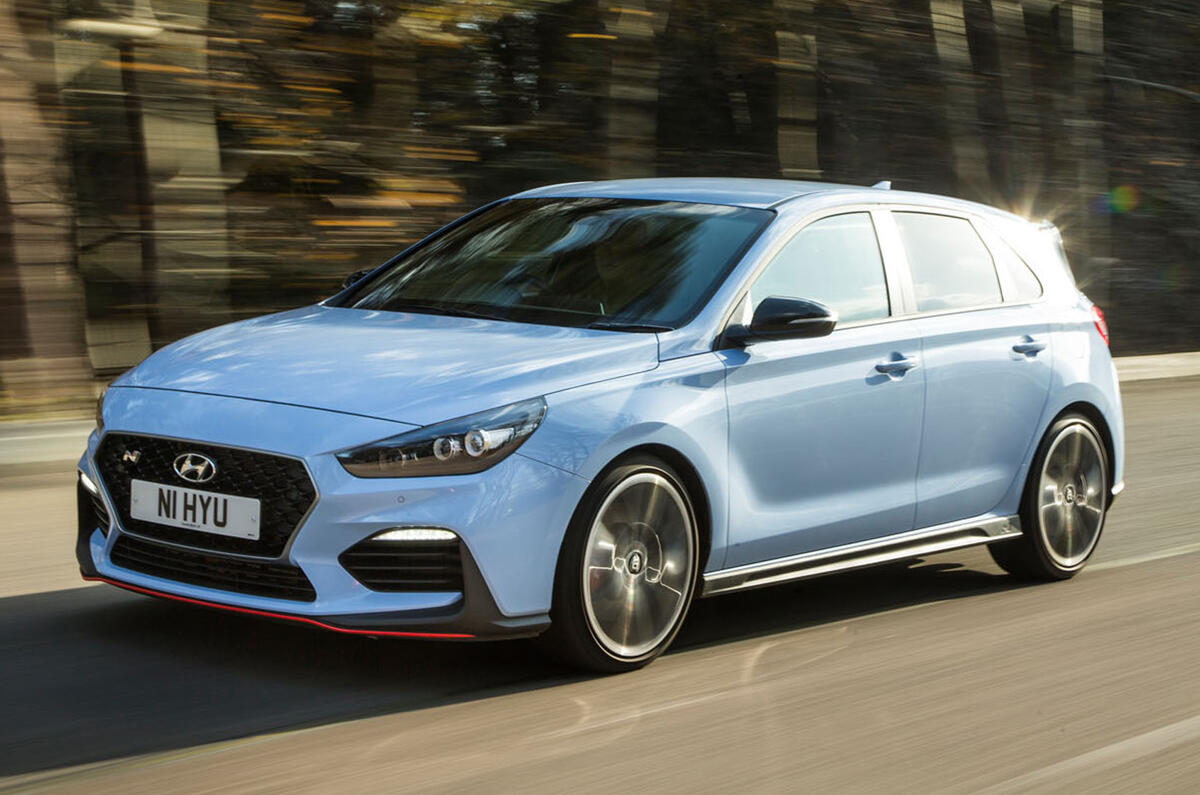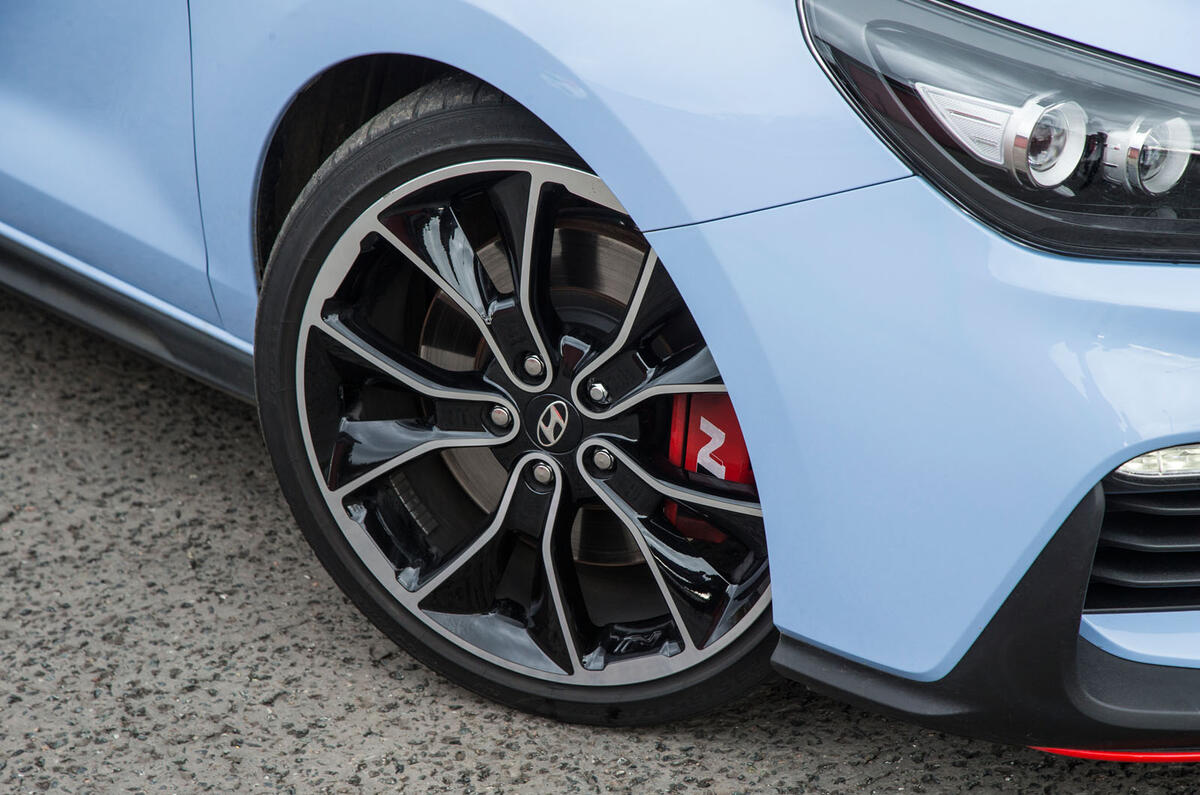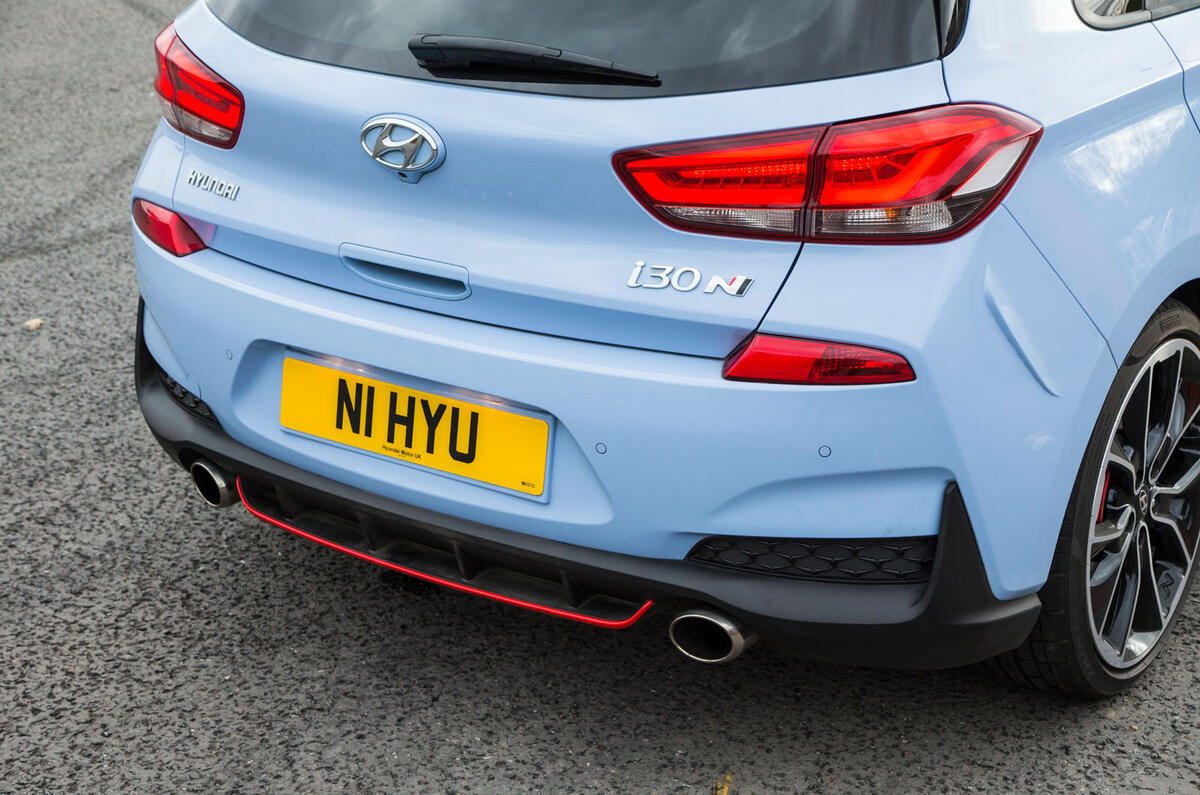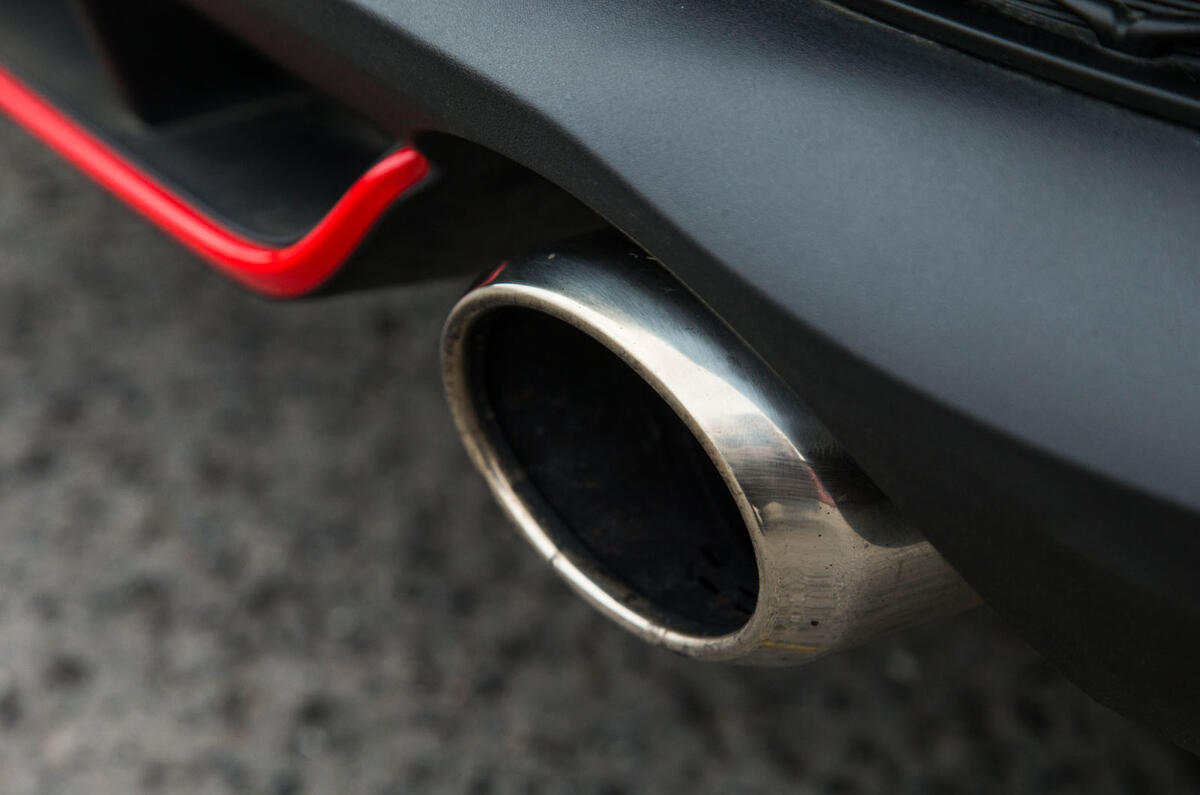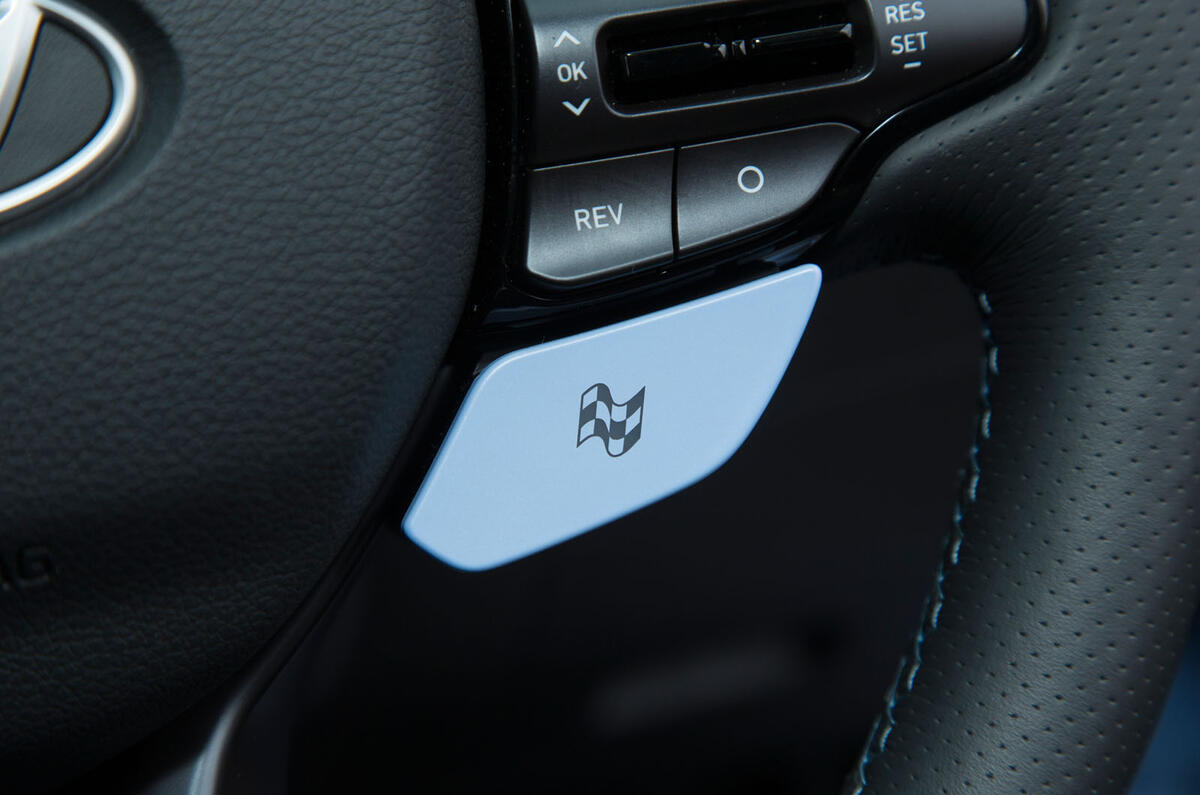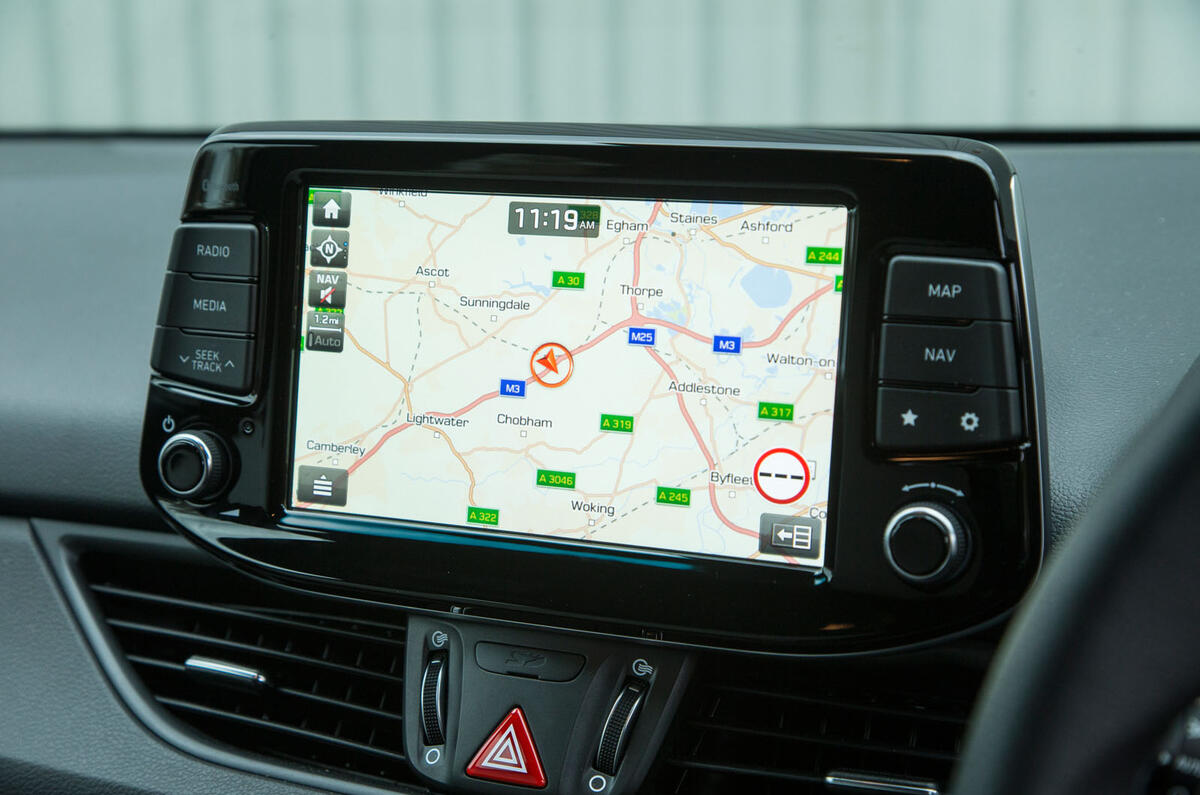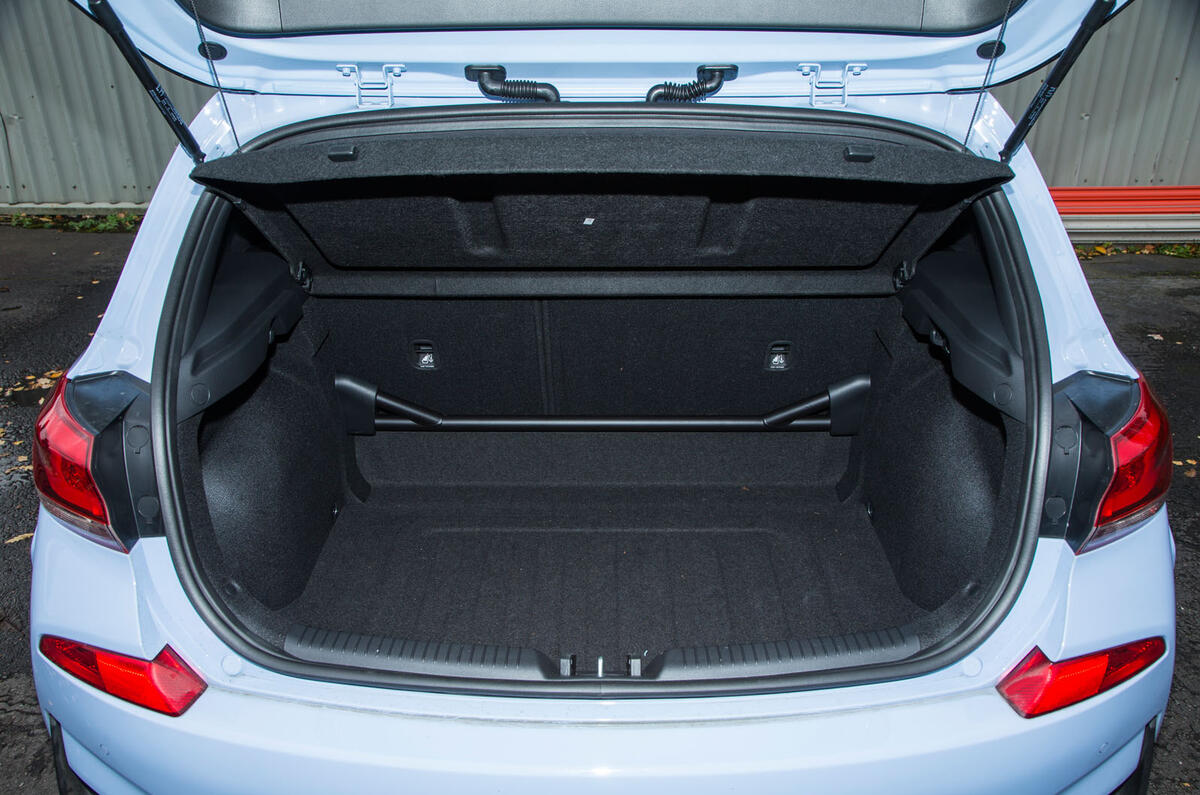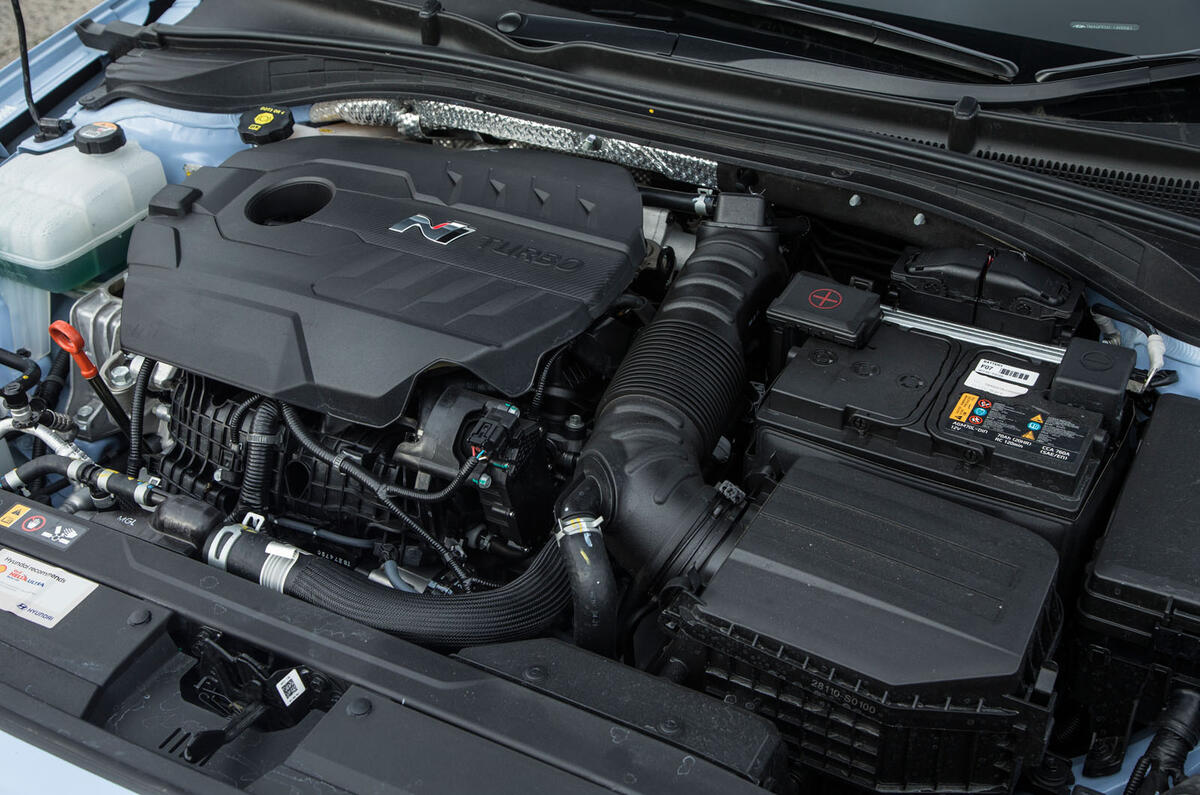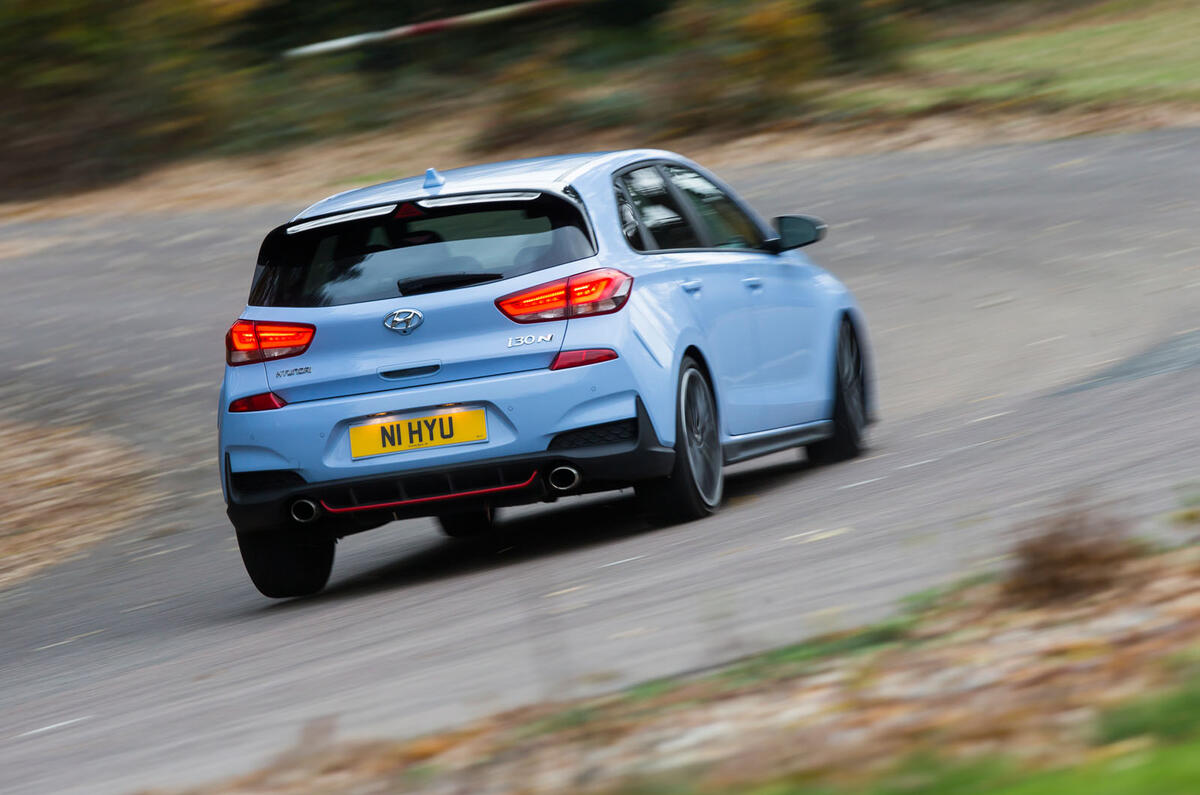There’s plenty of hardcore purpose about much that the i30 N does on the road. If anything, there’s often too much of it, which may be a failing you’re willing to forgive of a company so keen to convince the world that it has made a really serious performance car for the first time.
It’s just a shame that so much of the car’s grungy attitude is of little advantage to it and that the ride and handling simply don’t hang together better in a more coherent, communicative and really rewarding driving experience.
The surprisingly cloying weight in the steering rack is the thing that strikes you first about it: there’s loads of it, even in the Normal drive mode the car defaults to, and yet not quite the level of contact patch feedback that such weight usually gives you access to.
It may be, of course, that Hyundai doesn’t want to expose us to all of the forces going through that front axle, with an electronic locking differential dialling up and down its torque transmission settings. And yet it doesn’t quite seem to protect us from the consequence of that process, either; because while the steering rim as often feels leaden and inert as it does connected and honest, its weight can fluctuate quickly and starkly when you’re giving the chassis a close dynamic examination.
Not as starkly, though, as the i30 N’s ride changes as you switch from Normal through Sport and – if only to fully satisfy your amazement – eventually into the preposterously firm N suspension mode.


